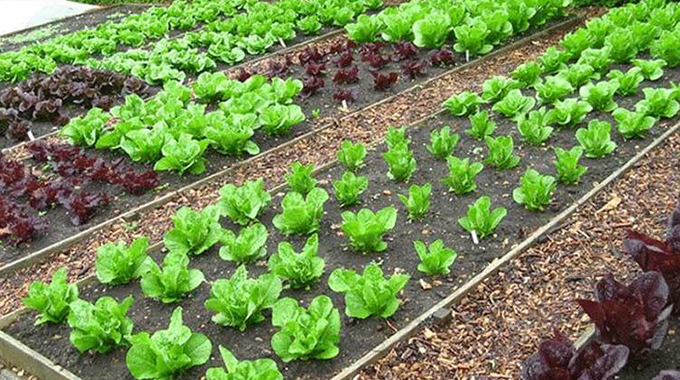Vegetable gardening facts you need to know

Fact 1 – You don’t have to plant everything at the same time
Succession planting is simply the act of planting one crop after another in the same garden space.
The first crop from this raised bed has already been harvested and it has been succession planted for another crop.
Succession planting made simple:
- Plan in advance. Make a rough map of your garden, indicating what you wish to grow in each bed and what crops will follow the initial planting. For example, if you are growing peas in one bed, you may follow that with a mid-summer planting of broccoli or cucumbers. Those crops will be replaced with hardy winter greens like spinach, arugula, or mache.
- Feed the soil between crops. To keep production high, work in compost or aged manure between crops. A balanced organic fertilizer will also help encourage healthy growth.
- Use your grow-lights. Start sowing fresh seeds for succession crops; cucumbers, zucchini, broccoli, kale, cabbage, and more.
Fact 2 – Not all crops are easy to grow
New gardeners may want to stick to ‘beginner-friendly’ crops like bush beans, cherry tomatoes, peas, and lettuce, giving themselves a chance to flex their gardening skills before they tackle more demanding crops. Sometimes the problems can be weather based; a cold, wet spring or a long summer drought can affect crop growth. As well, certain vegetables are incredibly prone to insects or diseases. Squash bugs, potato bugs, cabbage worms, and cucumber beetles are just a few of the pests that gardeners can, and probably will, encounter.
Not all vegetables are easy to grow. Some, like cauliflower and this Romanesco cauliflower need a long, cool season in order to crop well.
This obviously doesn’t mean that you shouldn’t grow a vegetable garden. After all, I have twenty raised beds! Every season brings its successes and failures, and if one crop (spinach, lettuce, cabbage) doesn’t appreciate the long, hot summer, others will (peppers, tomatoes, eggplant). Don’t get discouraged, instead get educated. Learn to identify the pests and the beneficial insects that you see in your garden, and how to deal with them. Sometimes pest control is as easy as covering crops with a lightweight row cover, other times it’s including plants that attract beneficial insects to munch on the bad bugs.
Fact 3 – Keeping on top of weeds will save you time and frustration
As with garden pests, you’ll probably notice that you fight the same weeds year after year. For me, it’s chickweed and clover, but one of the most important vegetable gardening facts that you can learn is that staying on top of weeds will make you a happy gardener.
Mulching around vegetables with straw or shredded leaves will suppress weed growth and hold soil moisture.
Easy weeding:
- Plan to pull weeds after a rain. The moist soil makes weeding easier and long-rooted weeds, like dandelions will just slip from the soil – so satisfying!
- When it comes to weed prevention, mulch is your best friend. Add a layer of straw or shredded leaves around your crops will suppress weed growth and hold soil moisture. Less watering!
- Keep pathways clear of weeds with a layer of cardboard, or several layers of newspaper, topped with bark mulch, pea gravel, or another material.
- Never, ever let weeds go to seed in your garden beds. Letting weeds set seeds equals years of future weeding. Do yourself a favour and stay on top of the weeds.
- Need more weeding tips? Check out our expert, Jessica Walliser’s 12 tips on organic weed control.
Fact 4 – vegetable gardening can save you money
Growing your own food can slash your grocery budget, but it can also cost you money.
Certain crops, like heirloom tomatoes, are expensive to buy, but generally easy to grow. Growing high-value crops can help reduce your grocery budget.
If budget gardening is your goal, and your site has full sun and decent soil, you will be able to start saving money sooner than someone who has to build or buy raised beds and bring in manufactured soil. But, even raised beds can be made from materials like logs, rocks or free-formed with no edging. Existing soil can be tested and amended with compost, aged manure, natural fertilizers, chopped leaves, and so on.
It’s also important to keep in mind that certain crops are high-value crops, which means they cost a lot of money to buy at grocery stores and farmers markets. But, many of these are easy to grow; gourmet salad greens, fresh herbs, heirloom tomatoes, and fruits like strawberries and raspberries. That can save you money.
Food gardening offers other benefits to the gardener besides cost-saving; mental satisfaction, physical exercise, and time spent in the great outdoors. Benefits far outweigh the costs and work.









Comments